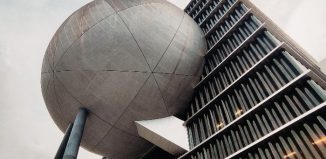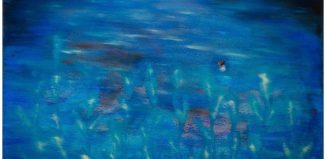Ilza Burchett – The Political and The Aesthetical in the “True Blue” by Le Quy Tong

“The momentum of the peacemaking negotiations was lost with Nixon’s victory in the 1968 elections. They became bogged down in the absurd “shape of the table” debate which was carefully manipulated to persuade the world public that both sides had taken leave of their senses. It was a clever gimmick – too clever by far to have been thought up by the Saigon delegation which was credited with having invented it. In fact it was a filibuster device to prevent any substantive discussions taking place until Nixon had taken over at the White House. The newspaper‑reading and media-influenced public could be excused for being furious about lives being lost on the battlefield while bureaucrats in Paris argued as to whether the shape of the negotiating table should be round, square or oblong. But in fact a political content had been injected into this question which was of prime importance to the nature of the four‑party discussions which were to follow.”[1]
Wilfred Burchett – from “Memoirs of a Rebel Journalist: The Autobiography of Wilfred Burchett”
On view at Manzi is the latest body of works by Le Quy Tong. Making up an exhibition of paintings and works on paper, all under one sole name and the singularity of its title, “True Blue”, the meaning of which pointedly superimposes itself on the act of looking at every work on show, as if to say that every one of them, and altogether express their belonging to it as one and the same, and their content as “unchangingly true”.[2]
Thus the choice of this exhibition title actively asserts the political in its meaning.
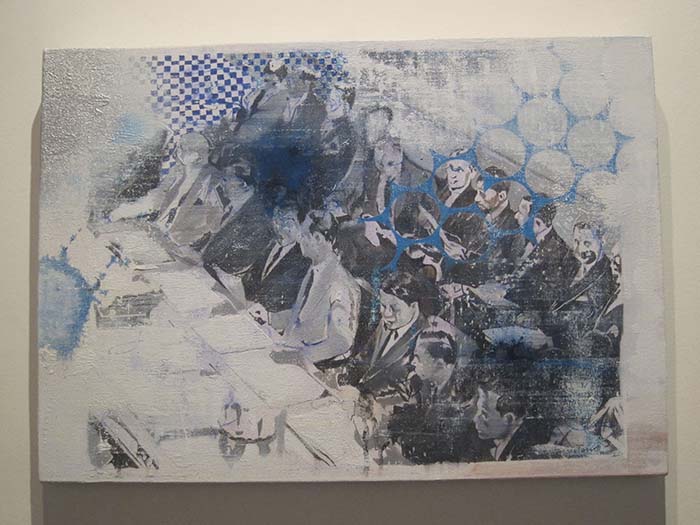
Thus the title and the works of art that it generically names, function together as a kind of visual rhetoric, that coolly proposes genericity, as a seemingly depoliticized comment on the visual politics of photographic archival images as a record and representation of historical events — that serve as the core raw material on which the works in this exhibition are built — by subtracting the temporal from their actual historical temporality.
By employing the formally generic contemporary artistic strategies of aesthetic pseudo-obscurantism in his visual language of overlays, pseudo-patterning, semi-abstractedness, (as – if -) collaged, (- as – if -) computer modified, processed historical photographic imagery, the artist constructs and presents the politics of his aesthetics, with which he aims to strip bare the political as such from its historical and temporal context as to point to what he sees as its generic core.
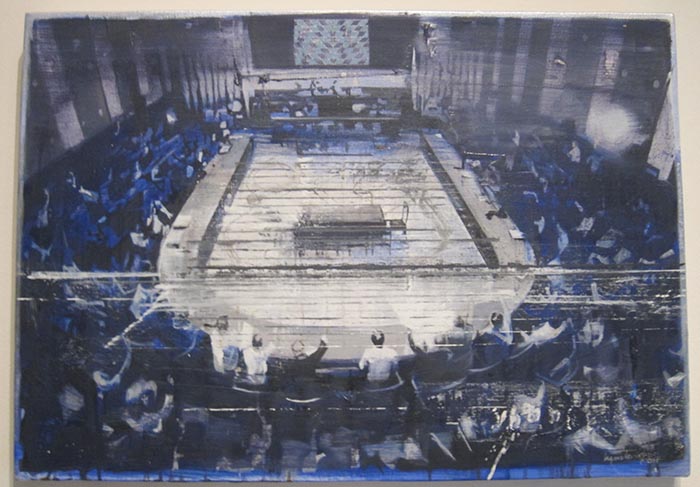
This is the junction at which his aesthetics take an ethical turn [3] where: “The construction of history and memory, or rather the construction of history and memory through photographic documentation, is called into question, and its limitations are revealed….”.[4]
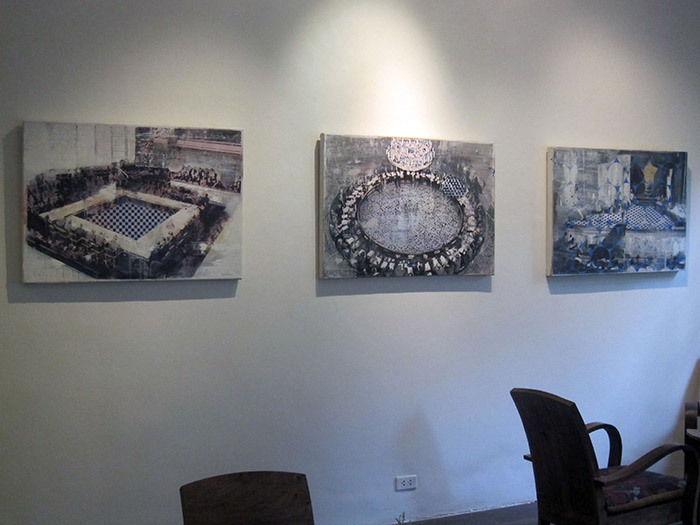
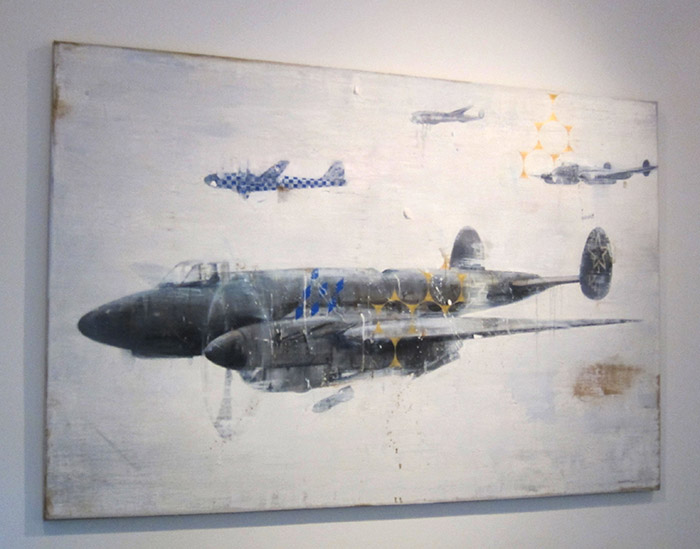
And right there arises the question as to the role of the artist, as a creator of new and an interpreter of the past in this act of “construction of history and memory”…, who takes it upon himself and uses his artistic license to augment and re-represent the questioned-by-him truthfulness of the temporal and atemporal reality of representation of the historical photographic documents in and through his work.
—————————————-
Notes:
[1] Wilfred Burchett, “Memoirs of a Rebel Journalist: The Autobiography of Wilfred Burchett”, edited by George Burchett and Nick Shimmin, (2005)
[2] True-Blue, adjective, unwaveringly loyal or faithful; staunch; unchangingly true, http://dictionary.reference.com/browse/true-blue
[3] Jaques Ranciere, “Dessensus: On Politics and Aesthetics”, (2010)
[4] ‘True Blue’ by Le Quy Tong at manzi, Media Release
| Ilza holds the deep conviction that there is nothing more damaging than indifference and that only a critique, based on peer to peer assessment of contemporary art practices, is the way to broaden and encourage the creative thought and new original artistic ideas — fostering a better understanding of contemporary visual art and the role of the artist as a creator of cultural values. Ilza Burchett is an internationally exhibiting artist, now based in Hanoi, Vietnam. |


